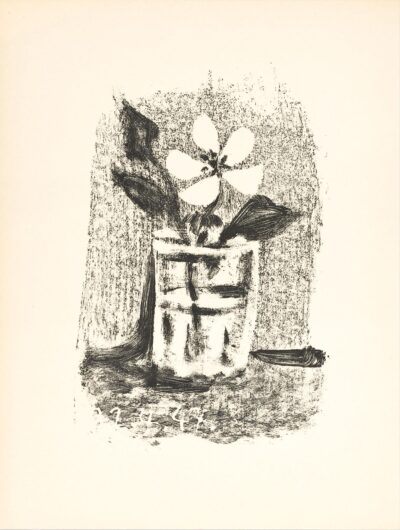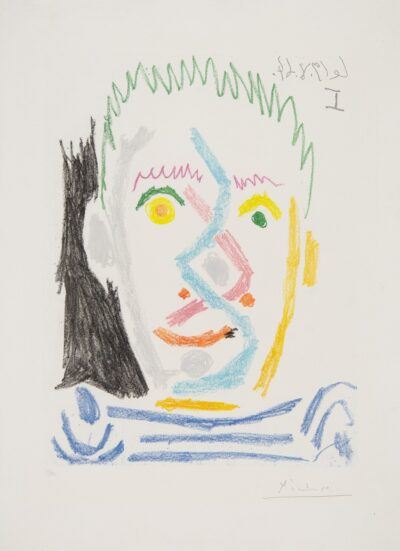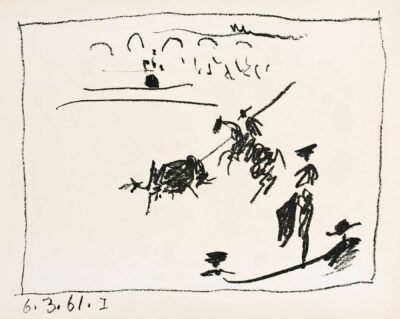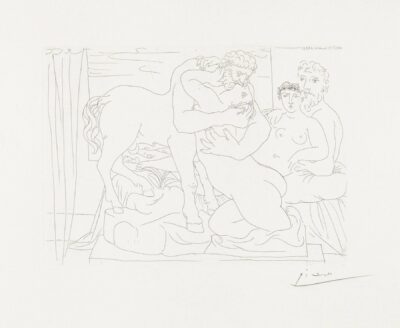Rembrandt Tenant par la Main une Jeune Femme au Voile
Pablo Picasso
REMBRANDT TENANT PAR LA MAIN UNE JEUNE FEMME AU VOILE
Etching
January 31, 1934
An original Pablo Picasso Etching.
(Rembrandt Holding the Hand of a Young Woman with a Veil)
January 31, 1934
Original etching printed in black ink on Montval laid paper
Dated in the plate “Paris 31 janvier XXXIX” (in reverse) lower right.
A fine impression of the only state printed after the steelfacing of the plate, from the edition of 50 printed on this paper (there were a further 260 impressions printed on Montval laid paper with smaller margins bearing the “Picasso” or “Vollard” watermark, and three impressions printed on parchment). Plate 36 of 100 from the Suite Vollard. Published by Ambroise Vollard, Paris, 1939; printed by Roger Lacourière, Paris.
Catalog: Bloch 214; Geiser 413.B.c.
Platemark: 10 7/8 x 7 13/16 inches Sheet size: 19 3/4 x 15 1/4 inches
The earliest reference to Rembrandt that appears in Picasso’s work dates from January 27, 1934, and was the result of a technical accident. While working on an etching that later became part of the Suite Vollard, Picasso encountered problems with the etching ground. The following week Picasso’s dealer, Daniel-Henry Kahnweiler, recorded in his diary these words of the artist: “Imagine, I made a portrait of Rembrandt. It was another case of the cracking varnish. I had an accident with the plate and said to myself, its ruined so I’ll do any old thing on it. I began to scribble and it turned into Rembrandt. I liked it so I continued. I even made a second, with his turban, his fur, and his eyes, those elephant eyes you know them. Now I’m working this plate further to get blacks like his; you don’t get that in one sitting.”
In Picasso’s later years the specific sources in Rembrandt’s work are clearly identifiable. However, this first appearance of Rembrandt in Picasso’s art is most likely a composite image of Rembrandt summoned from Picasso’s deep familiarity with the old master’s work.
Four days later, on January 31, Picasso made the etching described above. It juxtaposes an extravagantly rendered Rembrandt with a simply drawn classical female. It reveals a number of formal and iconographic issues of ongoing concern in Picasso’s art, including the contrasting forces of baroque and classical, light and dark, male and female, and the subject of the artist and model. At the end of his career Picasso returned to all of these issues in the context of his study of Rembrandt’s art.




